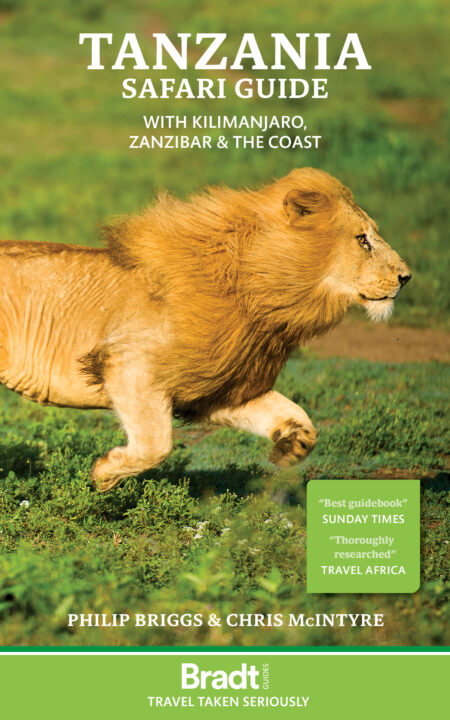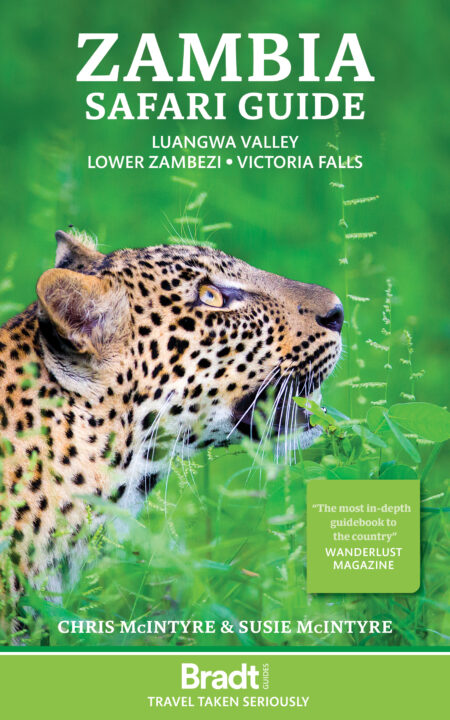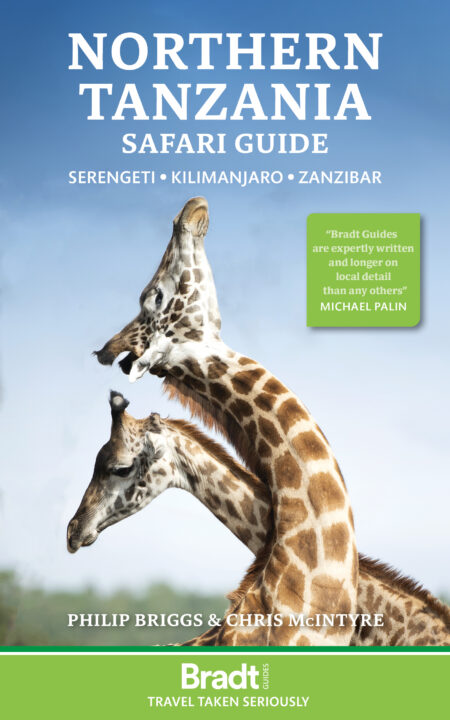Embarking on a safari? Well, you’re in for a treat but a dash of preparation – particularly with your packing list – is key to making your adventure a roaring success.
Whether you’re visiting the scenic landscapes of Cape Town in South Africa or the lush greenery of East Africa, the most important thing to keep in mind is that your clothing needs to be practical and comfortable.
Here’s a handy safari packing list to guide you.
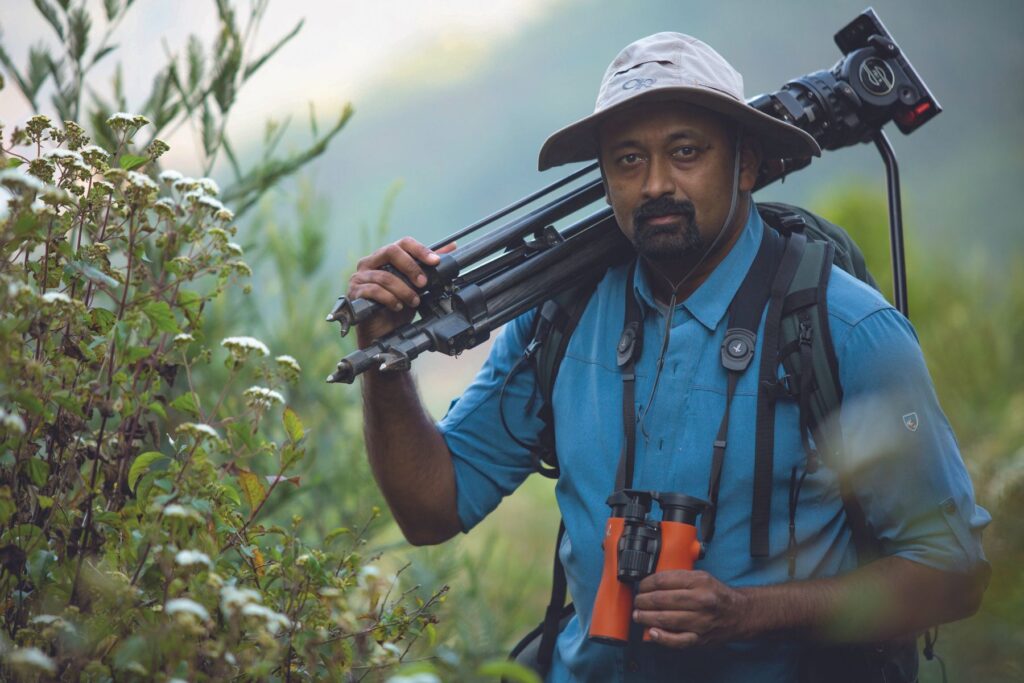
Imagine the possibilities
When looking for binoculars to compliment your safari adventure, we can recommend the NL Pure 32 from SWAROVSKI OPTIK. They have been designed to pack outstanding optical quality – their largest-ever field of view – into a remarkably compact and ergonomic shape.
Safaris often represent extended trips away from civilisation and, as can be seen from our extensive list, the amount of things you need to take can feel daunting. The NL Pure 32’s lightweight (640g) and compact (144mm x 130mm x 65mm) design make them easy to transport. Plus, their ergonomic shape makes them ideal for extended use, such as when on a safari tour.
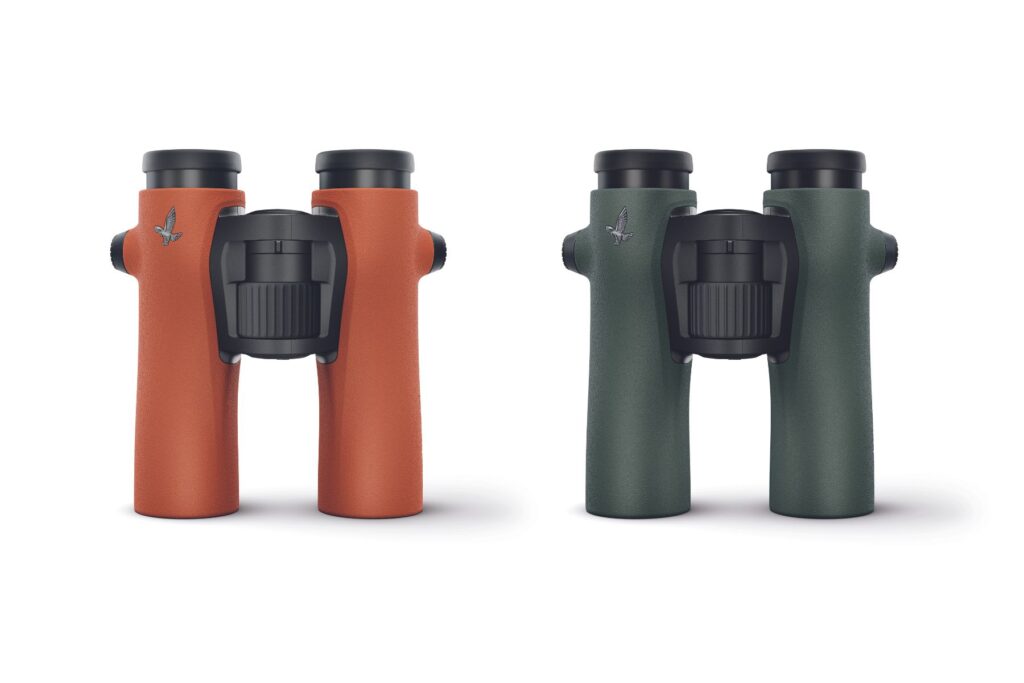
Safaris are about reconnecting with nature – feeling as close as possible to the wildlife you’ll be seeing. The ease of use and unparalleled field of view afforded by the NL Pure 32 makes the distance between you and the animals you encounter melt away to nothing. It’s almost indiscernible edges allow complete immersion in the natural world.
Visit SWAROVSKI OPTIK today to explore their range of options. Recommended retail prices for the NL Pure 32 start at £2,210.00
Thank you to SWAROVSKI OPTIK for sponsoring this article.
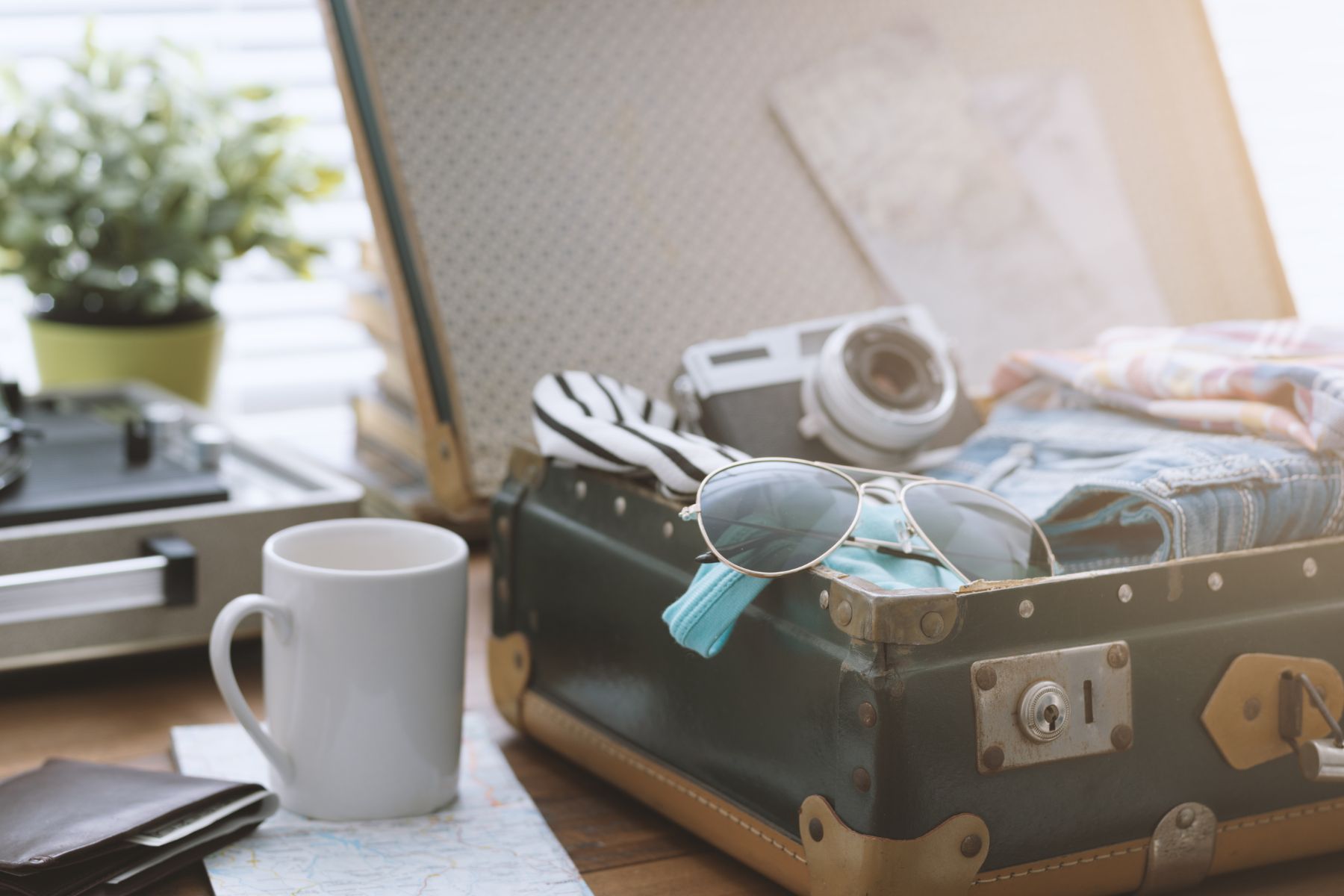
Must-Have Items for Your Safari Adventure
Get ready to tackle your upcoming safari with confidence. In this section, we’re going to equip you with the essential items you’ll need tucked away in your travel bag. These must-haves, validated by experienced safari-goers, are designed to amplify your comfort and safety, making your journey unforgettable.
Insect Repellent
While the African savannah buzzes with enchanting wildlife, remember it also buzzes with a variety of insects, including mosquitoes. They can be more than just bothersome; some carry diseases like malaria.
This makes a robust insect repellent your first line of defence. Not only will it safeguard your health but it’ll keep those pesky bugs at bay, allowing you to immerse yourself fully in the awe-inspiring scenery and wildlife.
High-Quality Camera Gear
There’s nothing like reliving the thrill of a lion’s roar or the grace of a bird in flight through stunning photographs. To do this, you’ll need quality camera equipment.
Look for high-resolution cameras with quick shutter speeds to capture every detail.
Remember to pick a suitable lens, like a telephoto lens, for safe close-ups. And don’t forget your spare batteries and memory cards.
With the right gear, you’re not just capturing moments; you’re creating memories to cherish forever.
SPF Lip Balm
The African savannah is arid and can leave your lips dry and uncomfortable. Keep them happy and healthy with an SPF lip balm. It offers sun protection and keeps your lips moisturised, helping you concentrate on the sights rather than chapped lips.
Wide-brimmed Hat
With the sun beating down, a wide-brimmed hat is your best friend. It provides comprehensive protection for your face, ears, and neck against harmful UV rays, reducing the risk of heatstroke and skin damage. Plus, it helps lessen the glare, giving you a clear view of the magnificent wildlife and landscapes.
Essential Documents
Never underestimate the importance of essential travel documents on a safari trip. These include your passport, travel insurance, vaccination records, and any required permits or visas. These documents serve as your safety net, helping you navigate through check-ins and ensuring peace of mind in case of emergencies. Prepare these well in advance to ensure a smooth and hassle-free safari adventure.
First Aid Kit
Let’s face it, the wild beauty of the African savannah can throw a few curveballs! From nicks and cuts to bug bites or sudden allergic responses, having a first aid kit within reach can be a real game-changer.
But remember, we’re not just talking about band-aids and antiseptics: a comprehensive kit also covers common maladies like headaches, tummy troubles, and fever. Bear in mind that some regions may not have access to immediate medical assistance, so being ready to tackle minor health hitches can make all the difference to your comfort and safety.
Prescription Medications
If you’re managing any health conditions that call for regular medication, don’t forget to include these in your safari checklist. Sudden changes in climate, altitude, or diet can sometimes trigger conditions, so it’s vital to have your prescribed drugs at your disposal.
Getting specific medications in remote safari regions may not be a walk in the park. So, pack not just for your stay but a little extra in case of unexpected travel hiccups. And keep a copy of your prescription handy – it can be a lifesaver in a medical emergency or if you need a refill.
Sunscreen and Sunglasses
Sunscreen and sunglasses are your secret weapons against the fierce African sun. Prolonged exposure to UV rays can harm your skin and strain your eyes. A high SPF sunscreen protects your skin from burns and shields against long-term damage, while sunglasses can cut down glare and enhance your wildlife spotting.
These aren’t just about comfort – they’re about health, guarding you against potential sun-related risks.
Pocket Knife
A pocket knife is a little tool with big benefits on a safari trip. Whether it’s cutting ropes, opening packages, or even whipping up an impromptu meal in the wild, a knife is your go-to gadget.
In a pinch, it can even be used for creating fire-starting materials or signalling devices.
Compact yet powerful, it’s a sensible addition to your safari kit. But remember, check the local rules before packing one, and always handle it responsibly.
Flashlight or Headlamp
When you’re in the heart of the wilderness, lighting can be a tad unpredictable. Whether it’s trailing back to your campsite, rummaging through your backpack, or glimpsing nocturnal creatures, a flashlight or headlamp is your guiding light.
Opt for a waterproof version to safeguard against sudden showers or damp conditions.
Plastic Bags
Don’t underestimate the power of the humble plastic bag on your safari journey! They can be your knight in shining armour when carrying damp items or keeping dust off your belongings.
Plus, they’re an eco-friendly way to manage your trash on the go – a small but vital step when you’re in unspoiled natural areas. Keep a stash handy to ensure you stay prepared for sudden downpours or unexpected clean-ups.
Water Bottle
The African sun can be fierce, and staying hydrated on your safari journey isn’t just important, it’s essential! Although there may be water sources scattered across your route, we recommend that you arm yourself with a reusable water bottle. Not only will it keep you hydrated on demand, but choosing an insulated variant will also ensure your drink stays chill, no matter the weather. It can also help cut down on plastic, a win for the environment.
Credit Cards
Travelling uncertainties might make for great stories later but in the heat of the moment, they can be stressful. Especially when they involve unexpected expenses.
That’s why we suggest having more than one credit card handy on your safari trip. This way, if one source fails, you’ve got a backup ready to swoop in. Just a quick tip – do inform your bank about your travel plans to avoid any surprise card blocks due to suspected fraud.
Backup Power Storage
To keep your electronic devices alive and kicking, consider carrying a backup power device, like a solar-powered charger or a power bank with multiple USB ports. With these allies at your side, you can ensure your devices stay charged, keeping you connected, and capturing memories. And let’s not forget, they can be your lifeline in case of emergencies, so consider packing extra batteries for good measure.
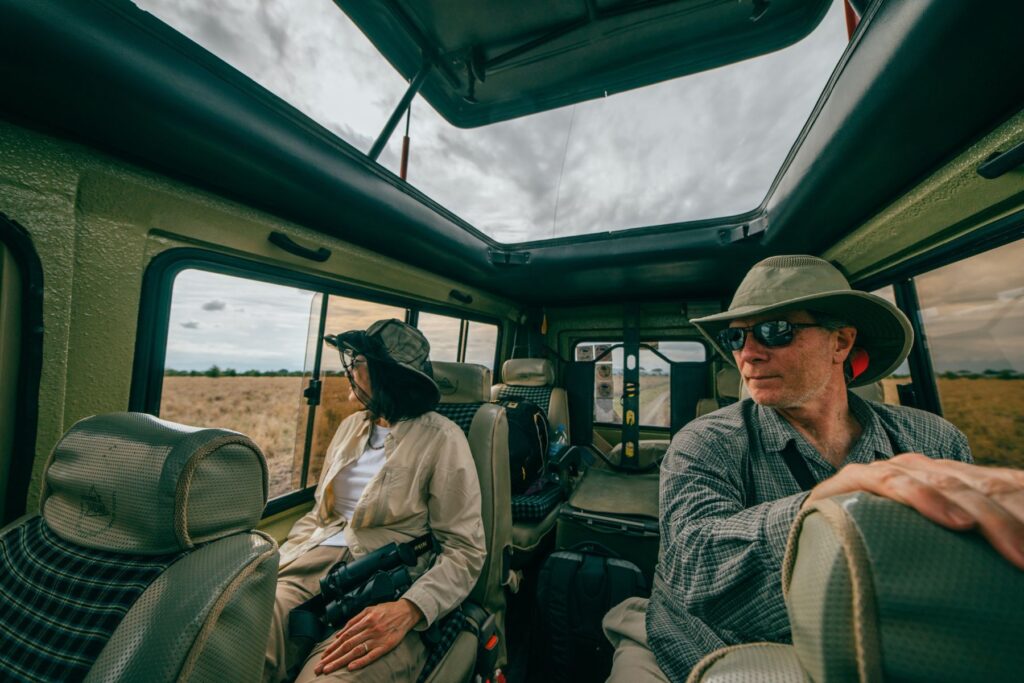
Dressing up for the Adventure: Your Safari Wardrobe Guide
As you gear up for your first African safari, remember that your wardrobe choices are just as pivotal as your gear. The aim is to strike the right balance between comfort, protection, and dealing with changing weather conditions.
In this segment, we will walk you through the must-haves for your ultimate safari packing list, ensuring you’re appropriately attired to enjoy the wild.
After all, safaris are less about fashion statements and more about practicality and functionality.
Embrace Full Coverage with Long-Sleeved Shirts and Trousers
Your African safari packing list should definitely feature long-sleeved shirts and trousers.
These unsung heroes defend your skin against sunburn, insect bites, and scrapes from the wild flora. We recommend picking out airy fabrics like cotton or linen that keep the heat at bay.
Go Incognito with Neutral Tones
Our wild friends tend to be a bit wary of bright colours. So, go incognito with earthy, neutral colours like khaki, green, and brown. They blend with the surroundings and keep you off the wildlife radar. And here’s a pro tip: give blues and blacks a miss, they’re tsetse fly magnets!
Step it up with Comfortable Walking Shoes
Don’t underestimate your footwear. It’s worth investing in a pair of comfortable walking shoes that can handle uneven terrain with ease. Opt for closed-toe models for that extra shield against injury, creepy crawlies, and snake bites. You might also want to consider lightweight boots for enhanced ankle support.
Layer Up for the Chill
African safaris aren’t all about the heat. Both morning and evening game drives can be surprisingly chilly. So, brace yourself with a warm jacket, fleece, or a sweater to layer up during these chillier spells. To top it off, pack in a beanie and gloves for those brisk early morning game-viewing drives. Warm layers are even more important during winter months and rainy seasons.
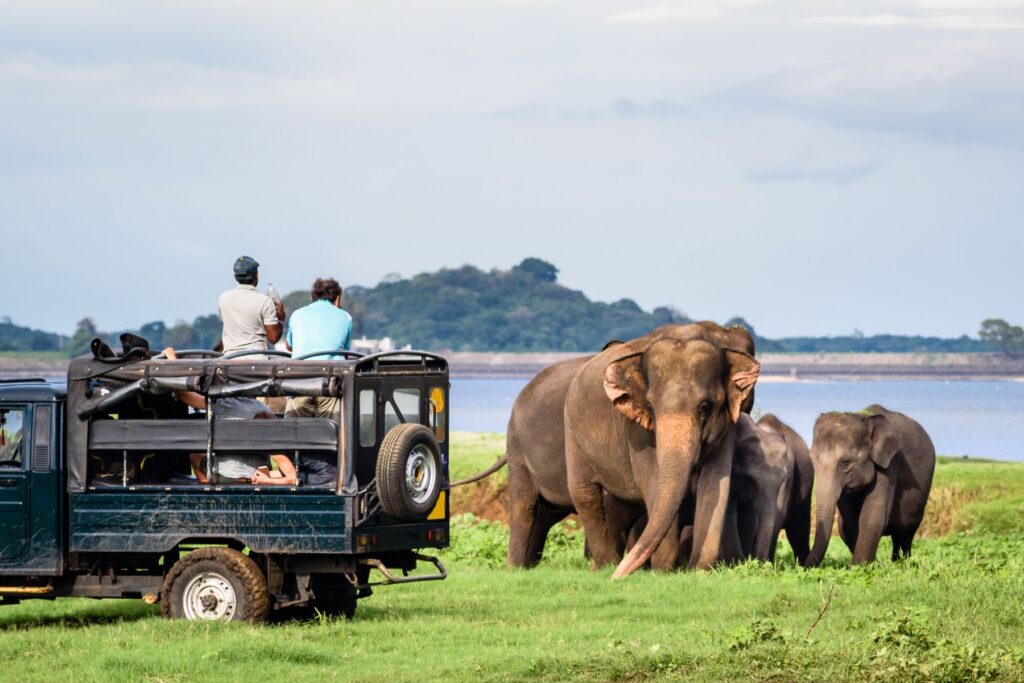
Packing for Different Types of Safaris
When it comes to safaris, your kit needs to be as diverse as your itinerary. So, let us guide you through the packing nuances for different safari styles.
Walking Safaris
When you’re treading the trails on a walking safari, comfort is king and safety is your knight in shining armour. Those trusty tramping shoes are your steadfast companions on unpredictable terrains. Opt for long-sleeved shirts and trousers to shield your skin from prickly bushes and peckish insects. A hat, lightweight and breathable, is your personal parasol under the blazing sun. And don’t forget a cosy backpack, your mobile pantry and binoculars boutique!
Safaris in Open Vehicles
Open vehicle tours serve a slice of dramatic weather shifts, so layering is your secret style strategy. A comfortable jacket or fleece becomes your sunrise and sunset snuggle. Your sunglasses, hat, and sunblock are your defence squadron against the sun’s fervour. And to keep your camera and other gear safe from the dust’s dance, consider a light, dust-proof bag.
Safaris Involving Bush Flights or Small Planes
For those embarking on a safari via a bush flight or small plane, less is more. Limited cargo space calls for a judicious choice of compact, light, and versatile items. Opt for soft-sided luggage that can squeeze into confined aircraft compartments. And remember, your carry-on bag is your mobile medicine cabinet, sheltering essential medications, just in case your checked-in luggage decides to take a detour!
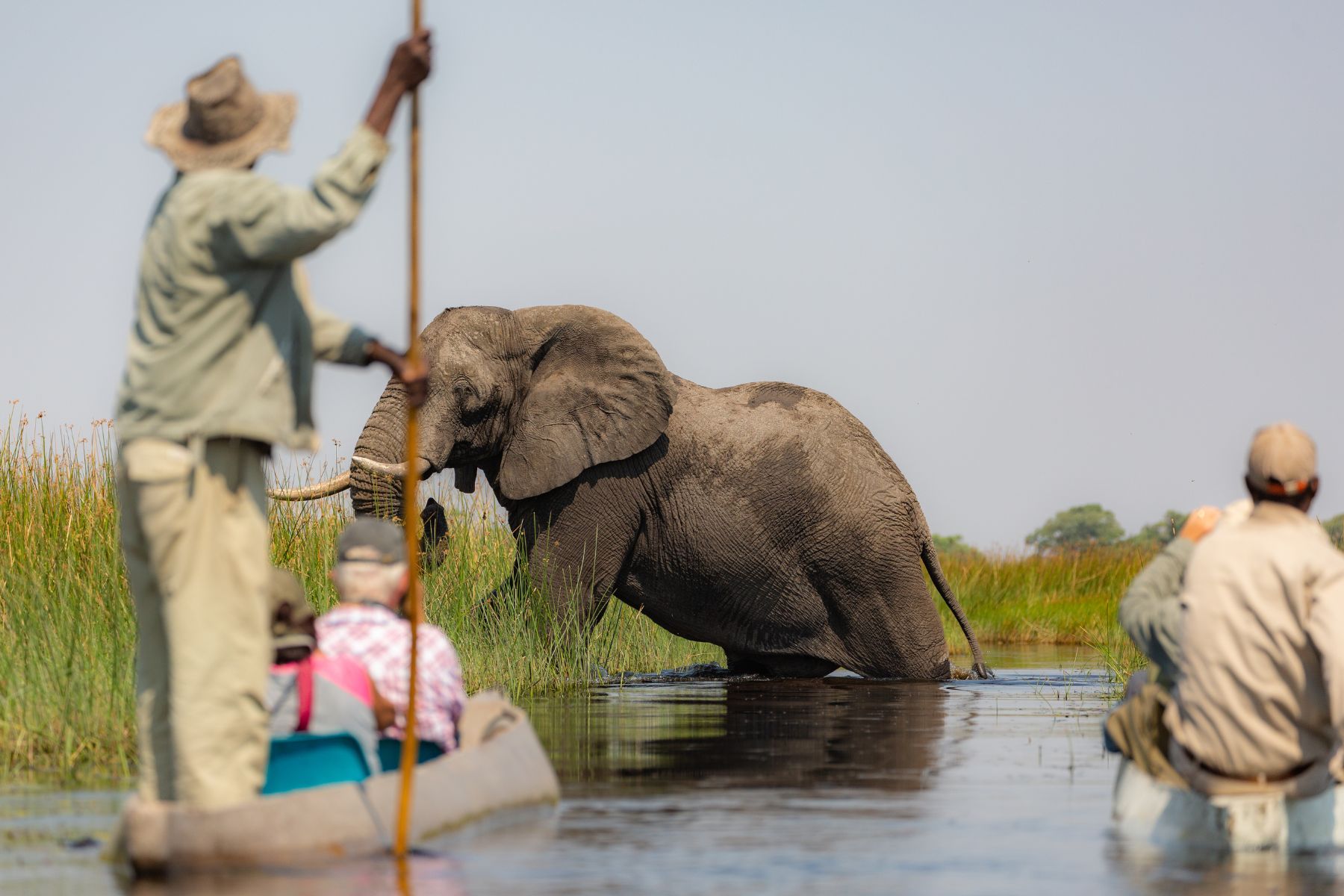
Packing Tips for Park-Specific Safaris
Whether you’re captivated by Kruger’s kaleidoscope of creatures, bewitched by Masai Mara’s grand Wildebeest Migration, or charmed by Okavango’s serene mokoro excursions, here’s your packing compass:
Kruger National Park
Ah, the spellbinding landscapes of Kruger, where diversity is the darling, and malaria, the lurking demon. Your packing mantra here is ‘protection’. Safeguard your health with the shield of appropriate malaria prophylactics. And in this terrain of temperature teeter-totters, courting cool nights and warm days, a wardrobe that cuddles and cools is your best bet. As ever, always check with your own healthcare professional weeks before your trip to make sure that you have the right prophylaxis.
Masai Mara
The Masai Mara basks in warmth, so weave in lightweight, breathable clothing for your comfort.
Okavango Delta
The Okavango Delta‘s celebrated mokoro trips call for your gear to get a waterproof wardrobe. And as the morning and evening boat rides flirt with the chills, warm clothing and a windbreaker become your thermal allies.
Across these national parks, binoculars are your safari spectacles, drawing distant wildlife into view. Choose compact yet sturdy, with powerful magnification and crystalline optics.
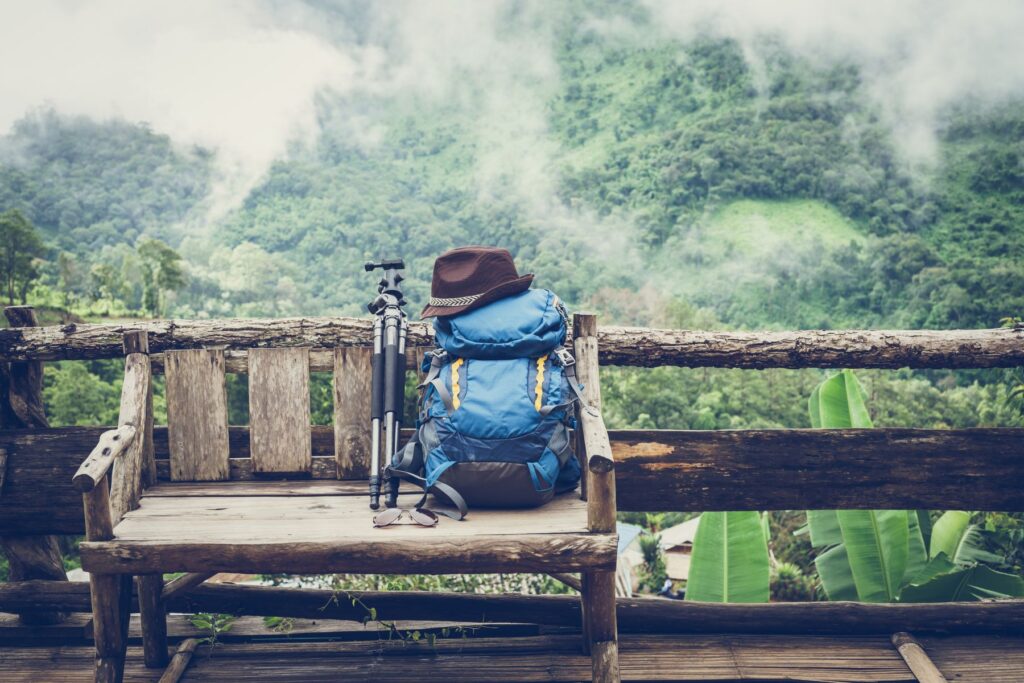
What Not to Pack for Your Safari
As you prepare for your adventure, it’s tempting to pull out all the sartorial stops. But remember, your safari suitcase should be a well-edited collection of essentials, not a closet on wheels. Here’s our advice on what to leave off your packing list:
Wave the Whites, Brights, and Patterns Goodbye
Remember, we’re blending in, not standing out. So, bid adieu to your vibrant tees, floral frocks, and anything white – they’re more likely to startle our furry friends and attract bugs. Stick to our previous colour advice, and let’s become a part of the picturesque panorama.
Ditch the Bulky Brigade
Remember, space is a precious commodity, whether you’re in a safari vehicle or a small aircraft. So, avoid the bulky temptations – large travel pillows, massive toiletries, or hefty gear. Go for their mini-me versions instead, embrace the magic of multi-purpose items, and keep the weight limit for hand luggage in mind when packing your soft-sided duffel bag.
Don’t Overdo the Shoe Show
When it comes to safari footwear, it’s quality over quantity. A trusty pair of closed-toe walking shoes for your bush explorations and a set of comfy sandals for those relaxing camp evenings should do the trick. Leave the shoe carnival at home.
Leave your Valuables in Safe Hands
High-end jewellery and expensive gadgets might make your heart flutter, but they’re better off safe at home. Travel brings an inherent risk of loss or damage, and trust us, the spectacular safari lodges cater to your basic needs and beyond.
In essence, packing for a safari is an exercise in minimalism and practicality. Laundry services are often available at most safari lodges and camps, so packing light is a good option. Remember, the lighter your load, the swifter your journey!

Bonus – Dodging the Bites: Your Guide to Staying Bug-Free on Safari
We have some expert advice to help you outsmart the local insects and ensure a bite-free journey.
Insect Repellent
First off, embrace the power of insect repellent. Acting as your invisible shield in the wild, choose one enriched with DEET for the best protection against mosquitoes and other biters. Like your favourite perfume, apply it generously and regularly, with special attention during twilight hours when mosquitoes love to party.
Protective Clothing
Consider your wardrobe as your armour against insect bites. Our previous style guide isn’t just about looking safari-chic, it’s also about safeguarding your skin. Opt for shirts with long sleeves, long trousers, and sturdy shoes during dawn and dusk. And remember, clothes treated with permethrin can give you another level of protection.
A Mosquito Net
If your safari accommodation has a mosquito population, erect your palace of protection: the mosquito net. Ensure it’s properly tucked in, leaving no chance for any intruders to breach your boundaries.
Vaccinations
Staying on top of your health game means keeping your vaccinations current. Have a chat with your doctor about any jabs you might need before your safari, especially for notorious diseases like malaria or yellow fever. And let’s not forget the regulars like tetanus and hepatitis A and B.
Steer Clear of Stagnant Water
Mosquitoes find stagnant water as attractive as bears find honey. So, avoid loitering around ponds or swamps, more so in the sweaty seasons.
By standing guard with these measures, you’ll reduce your risk of insect bites and related diseases, making your safari not just fun but also safe.
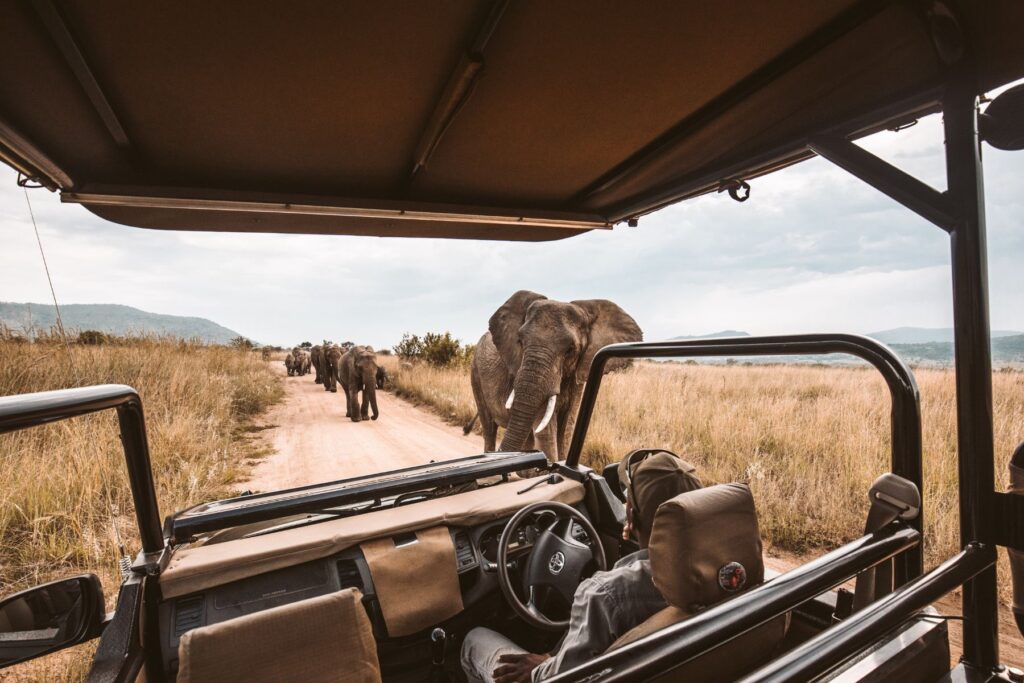
Wrapping Up: Top Tips for Packing for a Safari
As we come to a close, remember that preparing for your safari is an adventure in itself. The best advice we can give you is to plan ahead and give yourself enough time.
To recap:
- Embrace the neutrals: Blend in with nature by packing safari clothing in neutral hues. This is a great way for you to observe the wildlife without drawing attention to yourself.
- Travel light: Space is precious in safari vehicles and particularly on light aircraft charter flights. With weight restrictions and limited space, opt for lightweight, soft-sided luggage and remember, less is more.
- Plan your capsule wardrobe wisely: Pack three items for each day of your safari. These should be light, easy to layer and versatile. A day bag is handy for carrying personal items and an extra layer for those cold nights.
- The early morning and late afternoon game drives: Pack long sleeve shirts and mosquito repellent for early morning game drives and late afternoon expeditions. Remember, the last thing you want is to be distracted by bugs when you’re enjoying your time in the open vehicle.
- Pack Smart: A good book and a pair of binoculars are essentials for your safari. They offer an easy way to kill time during downtime and easy access to the action when it unfolds, respectively.
- Stay Healthy: Don’t forget to seek medical advice as soon as possible before your trip as some vaccinations may take months to complete.
Remember, each safari has its own charm and challenges. So, adjust your packing list based on your trip’s specifics to make the most of every moment.
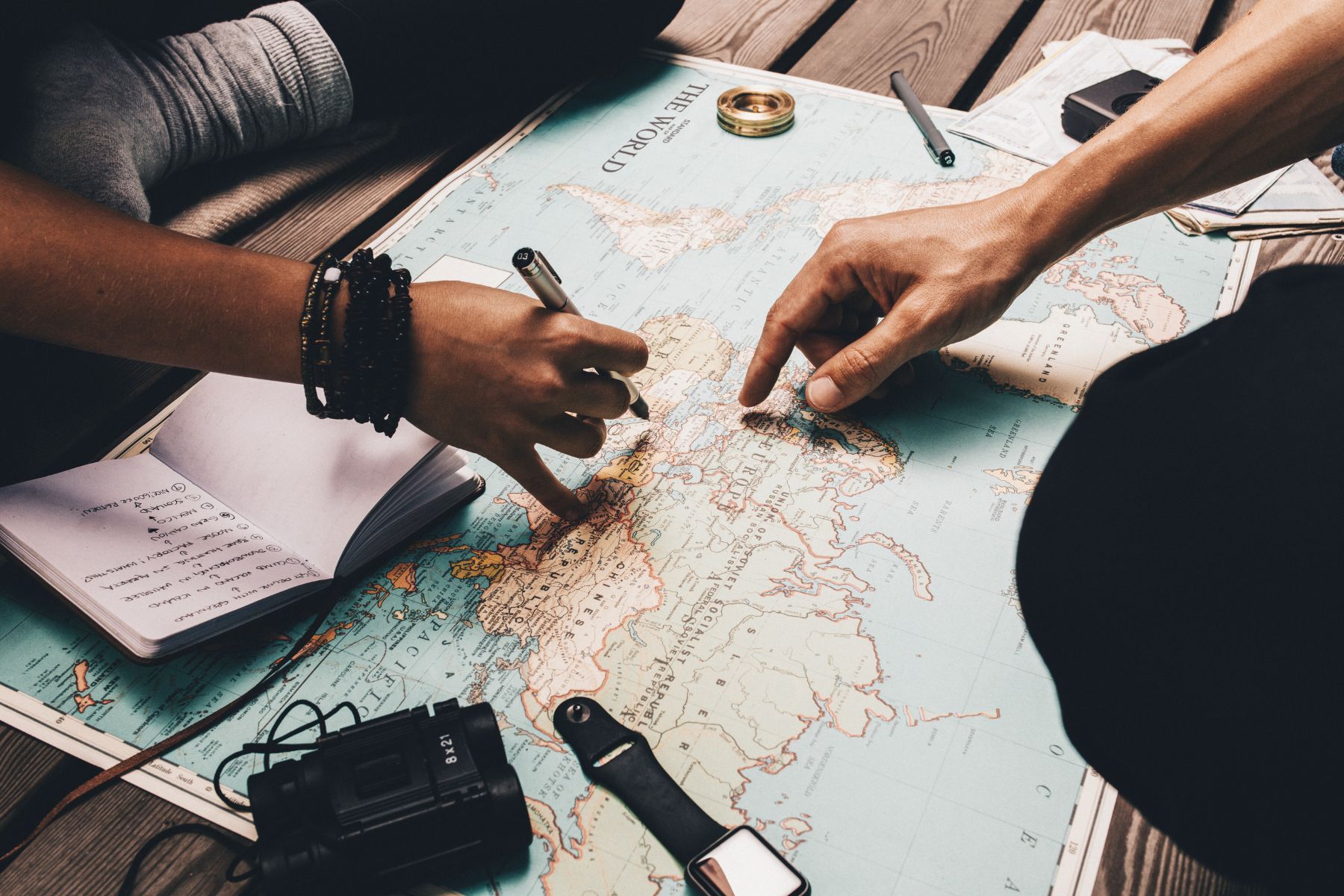
Safari Packing Checklist
Here is a checklist of essential items for a safari:
- Neutral-colored clothing (long-sleeved shirts, trousers)
- Sturdy, closed-toe shoes
- Comfortable sandals
- A warm jacket or fleece
- Sun hat and sunglasses
- High-factor sunblock
- Insect repellent
- Binoculars
- Camera with extra batteries and memory cards
- Travel-sized toiletries
- Medications (including malaria prophylaxis if necessary)
- Lightweight, breathable hat
- Waterproof bags for gear (for mokoro trips)
- Soft-sided luggage (for small aircraft)
- Reusable water bottle
- Travel documents (passport, visa, travel insurance, vaccination certificates)
More Information
Now that you’re all kitted out, there’s one question left: Where to? If you’re looking for inspiration, check out our list of the Top 10 Best Safaris in Africa. From Tunisia to Madagascar, we’ve got you covered for the very best safari experiences.
We also have many books here at Bradt catering to all kinds of safaris from around the world. Here are just some of our latest releases…

